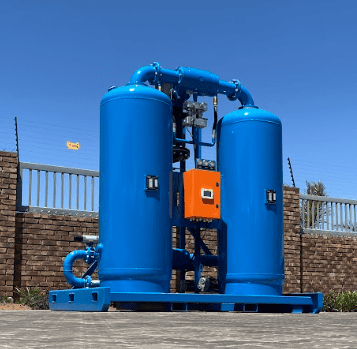COMPRESSED air is a form of motive power, the same as electricity, gas, water, and steam. Compressed air and steam are the power sources that are produced onsite where gas, water and electricity are clean, metered and paid for.
Most engineers will agree that steam and compressed air are the most contaminated forms of motive power.
Pre-cleaning with filtration
Clean and Dry (CaD) compressed air is generally treated by inline pad type separators and inline filtration. These are installed before and after the compressed air dryer. This may be a refrigerated or a desiccant air type dryer.
Consistent high quality compressed air is achieved with the correct dual pre-filtration of particles followed by a coalescing filter/s. Pre-filters may achieve particle filtration down to 1µm and oil vapour removal down to 0.01 ppm with particles to 0.01 µm. Filtration after the dryer may be in the form of dust filtration after a desiccant air dryer, or even activated carbon filtration.
“These specifications above are based on an air temperature approaching the filters of 20°C,” says Paul Cockfield, operations manager at Artic Driers International. “It’s a European specification that is not generally highlighted here in South Africa. The ability of the filter to obtain the oil vapour specification is dependent on the approach temperature to the filter casing. If the compressed air approach temperature is 30°C instead of 20°C, the ability of the filter to remove oil vapours is not the same, as the oil viscosity changes with temperature. Higher temperatures mean the filter is dealing with more vaporous oils.”
The oil vapour removal capability changes by a decimal point for every 10°C rise in temperature above 20°C. What was rated at 0.01 ppm now becomes 0.1 ppm oil vapour removal with a 30°C, or 1.0 ppm at a 40°C compressed air inlet temperature.
“To obtain high-grade compressed air quality, we must ensure that the compressor room is exceptionally well ventilated,” continues Cockfield. “Cross flow ventilation at high and low level is vital. Ideally entering on the cooler south side and exiting at high level on the north side of the room. The location of any air receivers should also be on the south side of the building to keep them as cool as possible. Cooler temperatures in the compressor room will assist in providing cooler compressor discharge temperatures, making filtration and air drying that much easier.”
Which dryer type to use
The choice of the air dryer is determined by the application. In some applications a compressed air dewpoint of +3°C is acceptable; this can be obtained by an air-cooled or water-cooled refrigeration air dryer. If sub zero dewpoints are needed, a heatless or heated desiccant air dryer can be considered. These dryers can achieve minus 40°C dewpoint or better.
In both dryer types, the higher the temperature entering the unit, the larger the dryer becomes, to cope with the elevated inlet temperatures.
If a minor portion of the air is required to be ultra dry for a specific application, a refrigeration air dryer can be the primary dryer. A less expensive desiccant smaller dryer can then be installed at the point of use.
Visit www.articdriers.co.za or email Paul@articdriers.co.za.
For a copy of Artic Driers’ notes on Compressor House Design, email vedre@articdriers.co.za
